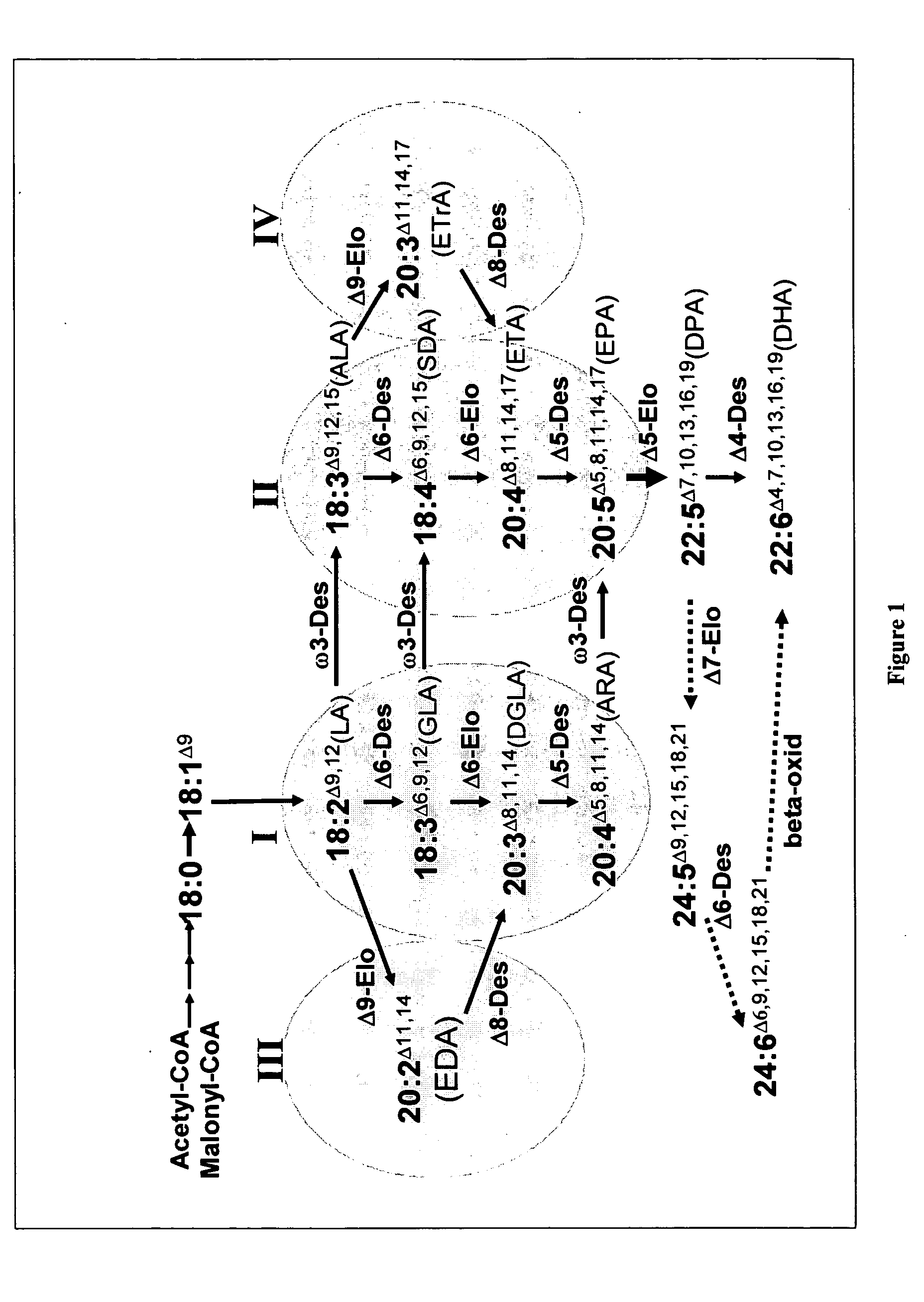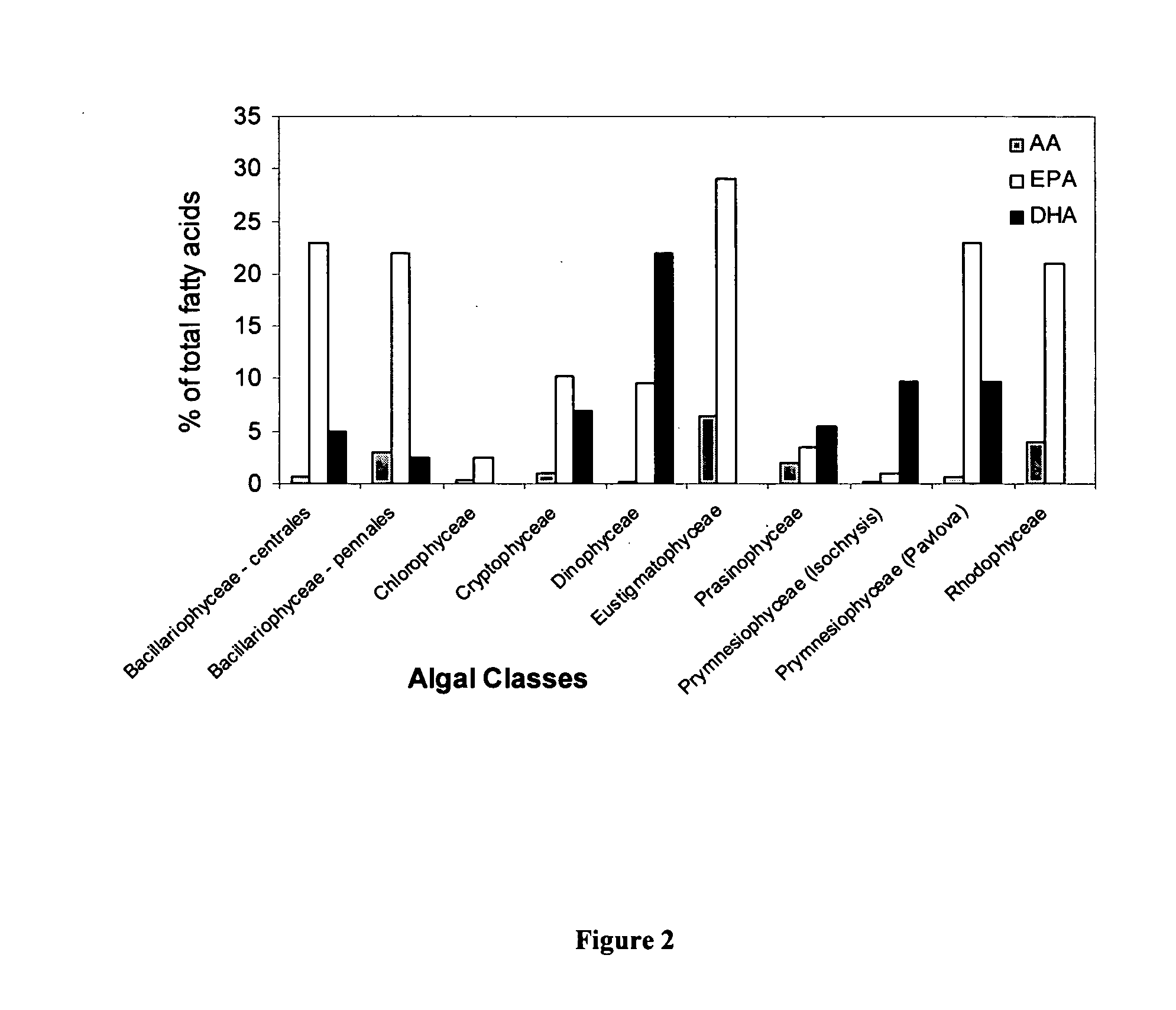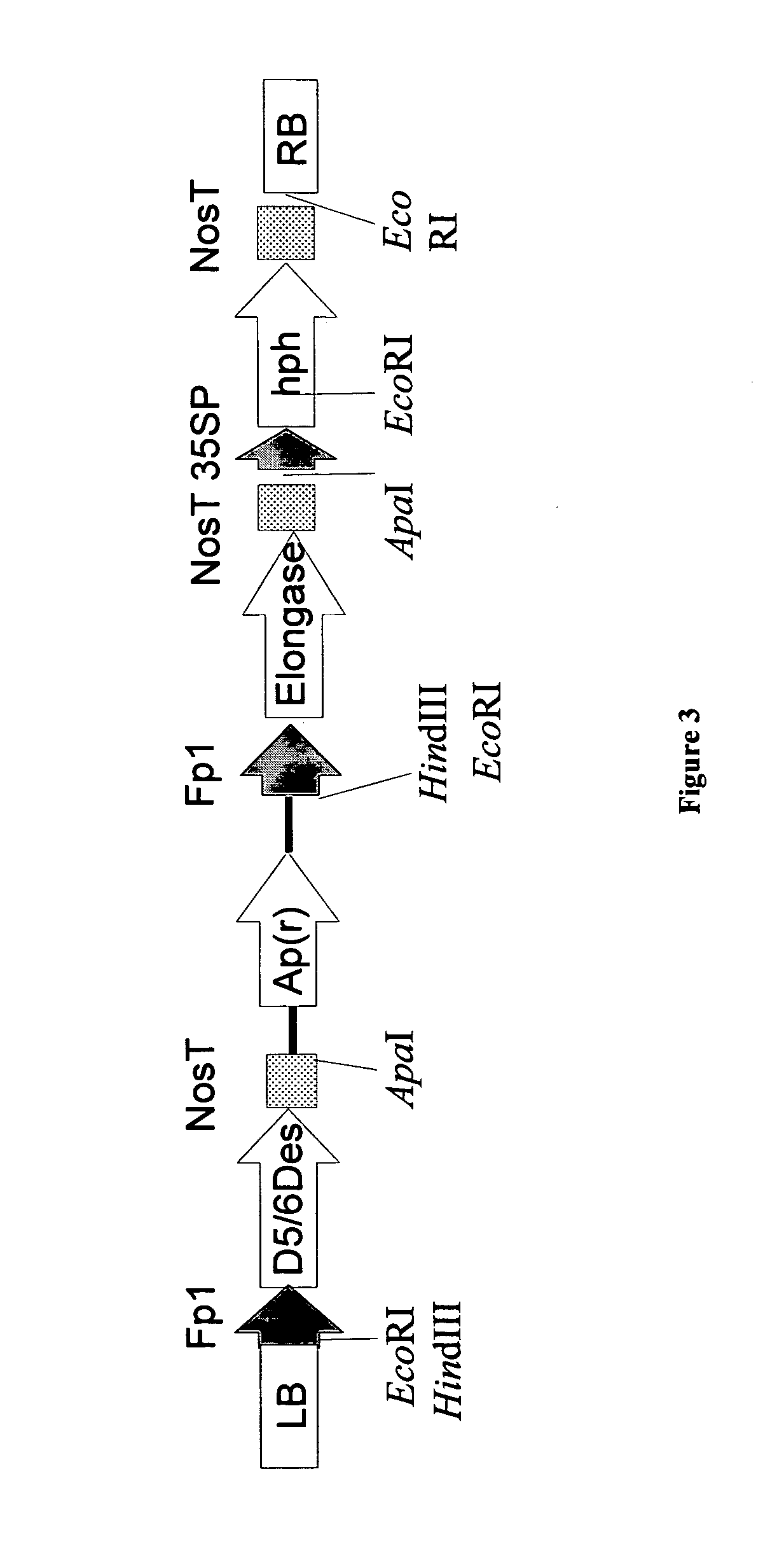Synthesis of long-chain polyunsaturated fatty acids by recombinant cells
a polyunsaturated fatty acid and recombinant cell technology, applied in the direction of fatty-oil/fat refining, bulk chemical production, metabolic disorder, etc., can solve the problems of high plant density, lack of polyunsaturated fatty acid synthesis capacity, and difficulty in achieving
- Summary
- Abstract
- Description
- Claims
- Application Information
AI Technical Summary
Benefits of technology
Problems solved by technology
Method used
Image
Examples
example 1
Materials and Methods
Culturing Pavlova salina
[0520]Pavlova salina isolates including strain CS-49 from the CSIRO Collection of Living Microalgae was cultivated under standard culture conditions (http: / / www.marine.csiro.au / microalgae). A stock culture from the Collection was sub-cultured and scaled-up in a dilution of 1 in 10 over consecutive transfers in 1 L Erlenmeyer flasks and then into 10 L polycarbonate carboys. The culture medium was f / 2, a modification of Guillard and Ryther's (1962) f medium containing half-strength nutrients, with a growth temperature of 20±1° C. Other culturing conditions included a light intensity of 100 μmol. photons PAR.m−2.s−1, 12:12 hour light:dark photoperiod, and bubbling with 1% CO2 in air at a rate of 200 mL.L−1.min−.
Yeast Culturing and Feeding with Precursor Fatty Acids
[0521] Plasmids were introduced into yeast by heat shock and transformants were selected on yeast minimal medium (YMM) plates containing 2% raffinose as the sole carbon sourc...
example 2
Microalgae and Polyunsaturated Fatty Acid Contents Thereof
The CSIRO Collection of Living Microalgae
[0527] CSIRO established and maintained a Collection of Living Microalgae (CLM) containing over 800 strains from 140 genera representing the majority of marine and some freshwater microalgal classes (list of strains available downloadable from http: / / www.marine.csiro.au). Selected micro-heterotrophic strains were also maintained.
[0528] This collection is the largest and most diverse microalgal culture collection in Australia. The CLM focused on isolates from Australian waters—over 80% of the strains were isolated from diverse localities and climatic zones, from tropical northern Australia to the Australian Antarctic Territory, from oceanic, inshore coastal, estuarine, intertidal and freshwater environments. Additionally, emphasis has been placed on representation of different populations of a single species, usually by more than one strain. All strains in the culture collection wer...
example 3
Isolation of Zebrafish Δ5 / 6 Desaturase and Functional Characterization in Yeast
[0547] As well as microalgae, some other organisms have the capacity to synthesise LC-PUFA from precursors such as α-linolenic acid (18:3, ALA) (see FIG. 1) and some of the genes responsible for such synthesis have been isolated (see Sayanova and Napier, 2004). The genes involved in omega-3 C20+PUFA biosynthesis have been cloned from various organisms including algae, fungi, mosses, plants, nematodes and mammals. Based on the current understanding of genes involved in the synthesis of omega-3 C20+PUFA, synthesis of EPA in plants would require the transfer of genes encoding at least two desaturases and one PUFA elongase. The synthesis of DHA from EPA in plants would require the additional transfer of a further desaturase and a further elongase (Sayanova and Napier, 2004). These enzymes are: for the synthesis of EPA, the sequential activities of a Δ6 desaturase, Δ6 elongase and a Δ5 desaturase is required....
PUM
| Property | Measurement | Unit |
|---|---|---|
| Fraction | aaaaa | aaaaa |
| Fraction | aaaaa | aaaaa |
| Fraction | aaaaa | aaaaa |
Abstract
Description
Claims
Application Information
 Login to View More
Login to View More - R&D
- Intellectual Property
- Life Sciences
- Materials
- Tech Scout
- Unparalleled Data Quality
- Higher Quality Content
- 60% Fewer Hallucinations
Browse by: Latest US Patents, China's latest patents, Technical Efficacy Thesaurus, Application Domain, Technology Topic, Popular Technical Reports.
© 2025 PatSnap. All rights reserved.Legal|Privacy policy|Modern Slavery Act Transparency Statement|Sitemap|About US| Contact US: help@patsnap.com



